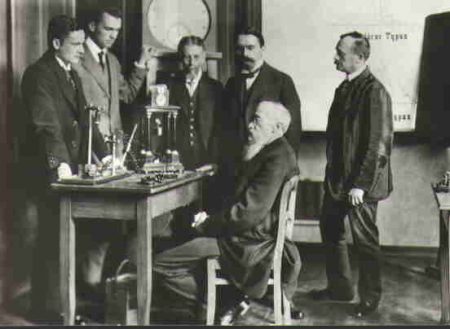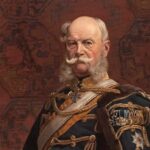
Wilhelm Wundt in 1902
Wilhelm Maximilian Wundt (born on August 16, 1832 – died on August 31, 1920) was a German physician, physiologist and philosopher widely regarded as the “father of experimental psychology”. Wundt, who noted psychology as a science apart from philosophy and biology, was the first person ever to call himself a psychologist.
Wundt was born at Neckarau, Baden (now part of Mannheim), the seventeenth child to parents Maximilian Wundt (a Lutheran minister), and his wife Marie Frederike.
Born in Germany which was considered very economically stable, Wundt grew up during a period in which the reinvestment of wealth into educational, medical and technological development was commonplace. An economic strive for the advancement of knowledge catalyzed the development of a new psychological study method, and facilitated his development into the prominent psychological figure he is today.
Wundt studied from 1851 to 1856 at the University of Tübingen, at the University of Heidelberg, and at the University of Berlin. In 1864 he became Associate Professor for Anthropology and Medical Psychology and published a textbook about human physiology. However, his main interest, according to his lectures and classes, was not in the medical field – he was more attracted by psychology and related subjects.

Wundt illusion
During the Heidelberg years from 1853 to 1873, Wundt published numerous essays on physiology, particularly on experimental neurophysiology, a textbook on human physiology (1865, 4th ed. 1878) and a manual of medical physics (1867). He wrote about 70 reviews of current publications in the fields of neurophysiology and neurology, physiology, anatomy and histology. A second area of work was sensory physiology, including spatial perception, visual perception and optical illusions. An optical illusion described by him is called the Wundt illusion, a variant of the Hering Illusion. It shows how straight lines appear curved when seen against a set of radiating lines.

Wilhelm Wundt (seated) with colleagues in his psychological laboratory, the first of its kind
In 1874 Wundt went to the University of Zürich for a year before embarking on the most productive phase of his career, as professor at the University of Leipzig (1875–1917). There, in 1879, he established the first psychological laboratory in the world, and two years later he founded the first journal of psychology, Philosophische Studien (“Philosophical Studies”). This marked psychology as an independent field of study. By creating this laboratory he was able to establish psychology as a separate science from other topics.
Wundt’s most important later works include Grundriss der Psychologie (1896; “Outline of Psychology”) and Völkerpsychologie, 10 vol. (1900–20; “Ethnic Psychology”).

Gravestone of Wilhelm Wundt, father of psychology, at Südfriedhof (southern cemetery) in Leipzig
Wundt was responsible for an extraordinary number of doctoral dissertations between 1875 and 1919: 184 PhD students included 70 foreigners (of which 23 were from Russia, Poland and other east-European countries, 18 were American). Several of Wundt’s students became eminent psychologists in their own right. They include: the Germans Oswald Külpe (a professor at the University of Würzburg), Ernst Meumann (a professor in Leipzig and Hamburg and pioneer in pedagogical psychology), Hugo Münsterberg a professor in Freiburg and at Harvard University, a pioneer in applied psychology), Willy Hellpach (in Germany known for cultural psychology).
In 1867, near Heidelberg, Wundt met Sophie Mau (1844–1912). She was the eldest daughter of the Kiel theology professor Heinrich August Mau and his wife Louise, née von Rumohr, and a sister of the archaeologist August Mau. They married on August 14, 1872 in Kiel. The couple had three children: Eleanor (*1876–1957), who became an assistant to her father in many ways, Louise, called Lilli, (*1880–1884) and Max Wundt (*1879–1963), who became a philosopher.







